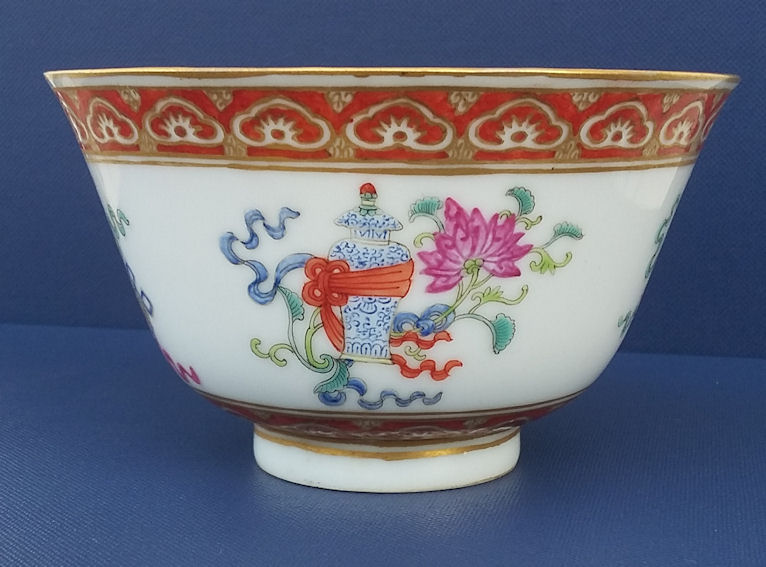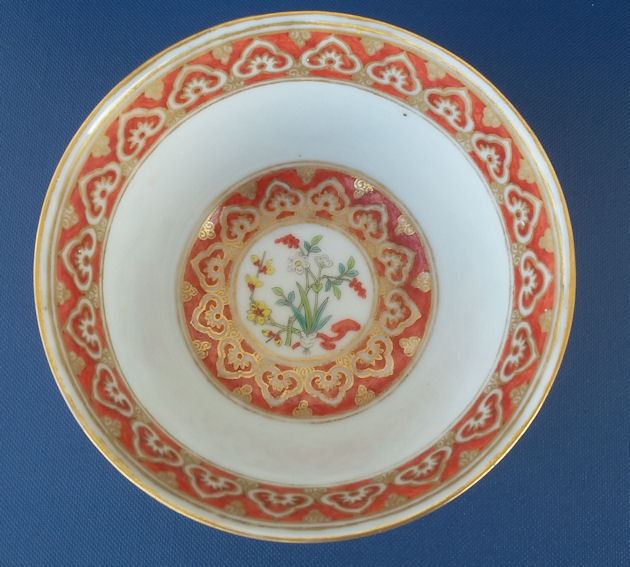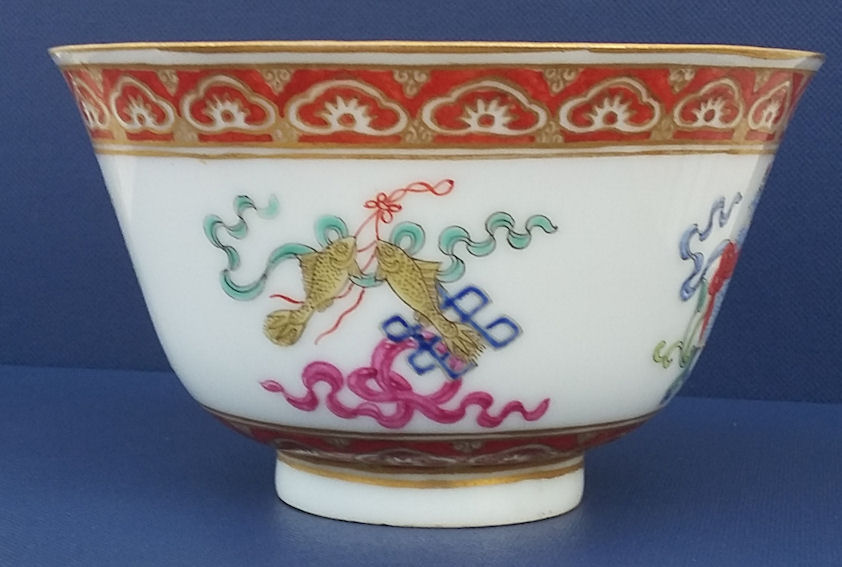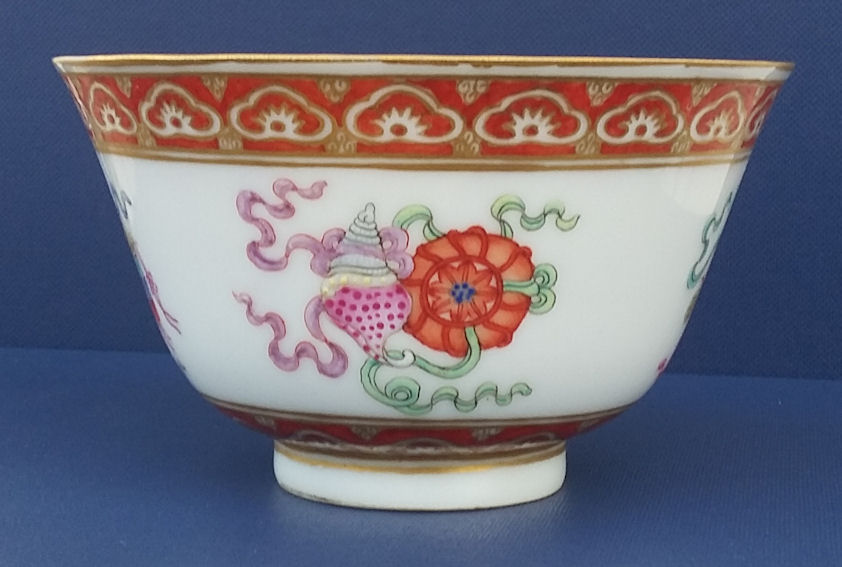
|
Subject:Re: Cup with Jiaqing mark - one for Bill H.!
Posted By: Bill H Sun, Dec 04, 2016
I've put together a better package of photos (link) showing the bowl I believe to be made by the Imperial Kiln during the Daoguang Reign (1821-50) and marked for the Hall for the Cultivatation of Virtue (Shendetang), said to be the Emperor's favorite spot at the Summer Palace. For comparison, I've also added a scan of a Qianlong-period example of a bowl in the same form and with identical ruyi scepter-head borders, and with principal decoration on the sides of calligraphy. It comes from a 1986 Taipei Palace Museum catalog for a special exhibition of famed Qing Dynasty Kangxi, Yongzheng and Qianlong porcelain wares.
Apart from varied motifs painted within the ruyi borders, the major difference between these bowls and yours appear to be:
-- The imperial bowls have no gilding on the topside of their upper rims.
-- The gilding on the imperial bowls appears to be much more evenly traced than on yours.
-- The Mainland-published "Dictionary of Marks on Historical Porcelains" shows no standard script four-character official kiln mark for the Jiaqing period, and the four-character seal-script marks shown are within square borders.
-- The enameled decoration on the imperial bowls is generally much better perfected than on your bowl. I would note that my bowl has a hairline crack and old discolored restoration to the rim immediately above the peaches in its "Three Abundances" (San Duo) decoration. Only around the restored area does the gilding show significant variances. The vase with ribbons and lotus blossom shown on the side on yours reveals a heavier hand wielding the brush as compared to the delicate work in the San Duo motif. Interestingly, the medallions in the cavettos of both these bowls represent much the same floral design, though the imperial kiln example is noticeably better detailed.
All things considered, I suspect your bowl probably was made at a minyao kiln circa the Guangxu period (1875-1908) and decorated by a fairly good painter or painters, but with less steady hands.
Best regards,
Bill H.
URL Title :Shendetang Bowl


|
 Cup with Jiaqing mark - one for Bill H.!
Cup with Jiaqing mark - one for Bill H.!  ( China & Japan ) - Mat - Dec 02, 2016 (03:54 AM)
( China & Japan ) - Mat - Dec 02, 2016 (03:54 AM)  Re: Cup with Jiaqing mark - one for Bill H.! - Bill H - Dec 04, 2016 (05:01 AM)
Re: Cup with Jiaqing mark - one for Bill H.! - Bill H - Dec 04, 2016 (05:01 AM)  Re: Cup with Jiaqing mark - one for Bill H.!
Re: Cup with Jiaqing mark - one for Bill H.!  - Mat - Dec 05, 2016 (08:17 AM)
- Mat - Dec 05, 2016 (08:17 AM)  Re: Cup with Jiaqing mark - one for Bill H.!
Re: Cup with Jiaqing mark - one for Bill H.!  - Bill H - Dec 06, 2016 (01:29 PM)
- Bill H - Dec 06, 2016 (01:29 PM)  Re: Cup with Jiaqing mark - one for Bill H.! - Mat - Dec 22, 2016 (04:51 AM)
Re: Cup with Jiaqing mark - one for Bill H.! - Mat - Dec 22, 2016 (04:51 AM)  Re: Cup with Jiaqing mark - one for Bill H.! - Lee - Jan 03, 2017 (12:57 AM)
Re: Cup with Jiaqing mark - one for Bill H.! - Lee - Jan 03, 2017 (12:57 AM) 





